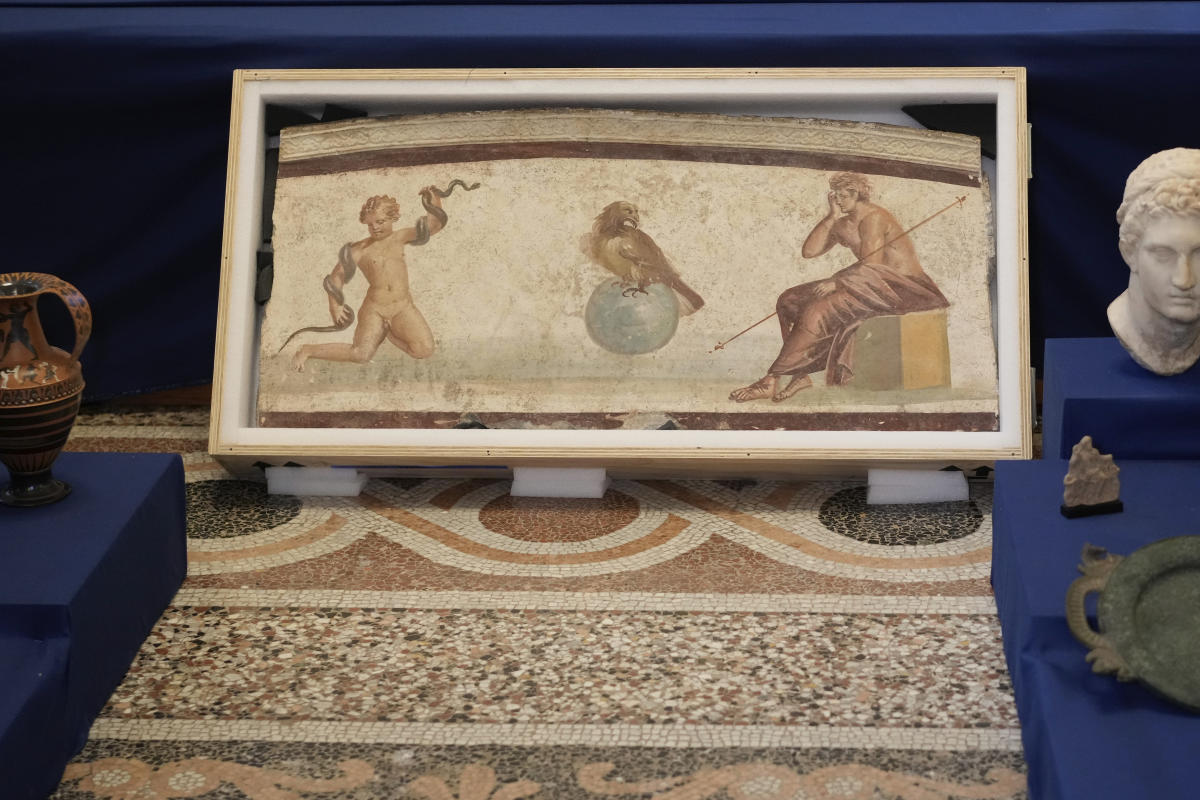ROME (AP) – A fresco depicting Hercules originally from Herculaneum, a city destroyed along with Pompeii by the eruption of Mount Vesuvius in AD 79, was back in Italy Monday, along with 59 other ancient pieces that illegally traded to the United States.
Last summer, US authorities announced that the fresco and dozens of other traded items, which ended up in private collections in the United States, would be returned to Italy.
Among the more precious pieces that Italian and American officials have shown to journalists in Rome is a BC kylix, or two-handled shallow drinking vessel, some 2,600 years old. Also returned is a carved marble head, from the 2nd century BC, depicting the goddess Athena.
Italy said the returned works are worth more than $20 million (18 million euros) in total.
The fresco, made in the classical style of Pompeian art, depicts Hercules as a child strangling a snake.
The returned pieces had been sold by art dealers, ended up in private American collections, and lacked documentation to prove they could legally be brought abroad from Italy.
According to a 1909 Italian law, archaeological objects excavated in Italy cannot leave the country without permission, unless they were taken abroad before the law was made.
Among those in attendance at Monday’s presentation was Manhattan Assistant District Attorney Matthew Bogdanos, chief of that office’s unit that fights the illegal antiquities trade. In this investigation, his office collaborated with a specialized art department of the Italian paramilitary Carabinieri.
“For Italian antiquities alone, we conducted 75 raids, recovered more than 500 priceless treasures worth more than $55 million,” said Bogdanos.
Italy has been a pioneer in recovering illegally exported antiquities from museums and private collections abroad.
The country has been so successful in recovering such ancient works of art and artifacts that it has established a museum for them. The Museum of Rescued Art was inaugurated in June in a cavernous structure that is part of Rome’s ancient Baths of Diocletian.
Italy’s cultural authorities are deciding whether to allocate the last returned pieces to museums near where they are believed to have been excavated. Culture Minister Gennaro Sangiuliano told reporters another possibility is to hold a special exhibition of the returned pieces.
It’s not just Italy that loses bits of its own history when artifacts are discovered in clandestine digs and smuggled to art dealers for profitable sale. Academic experts, deprived of valuable information about the context of the area where the objects were originally found, lose knowledge about past civilizations.

